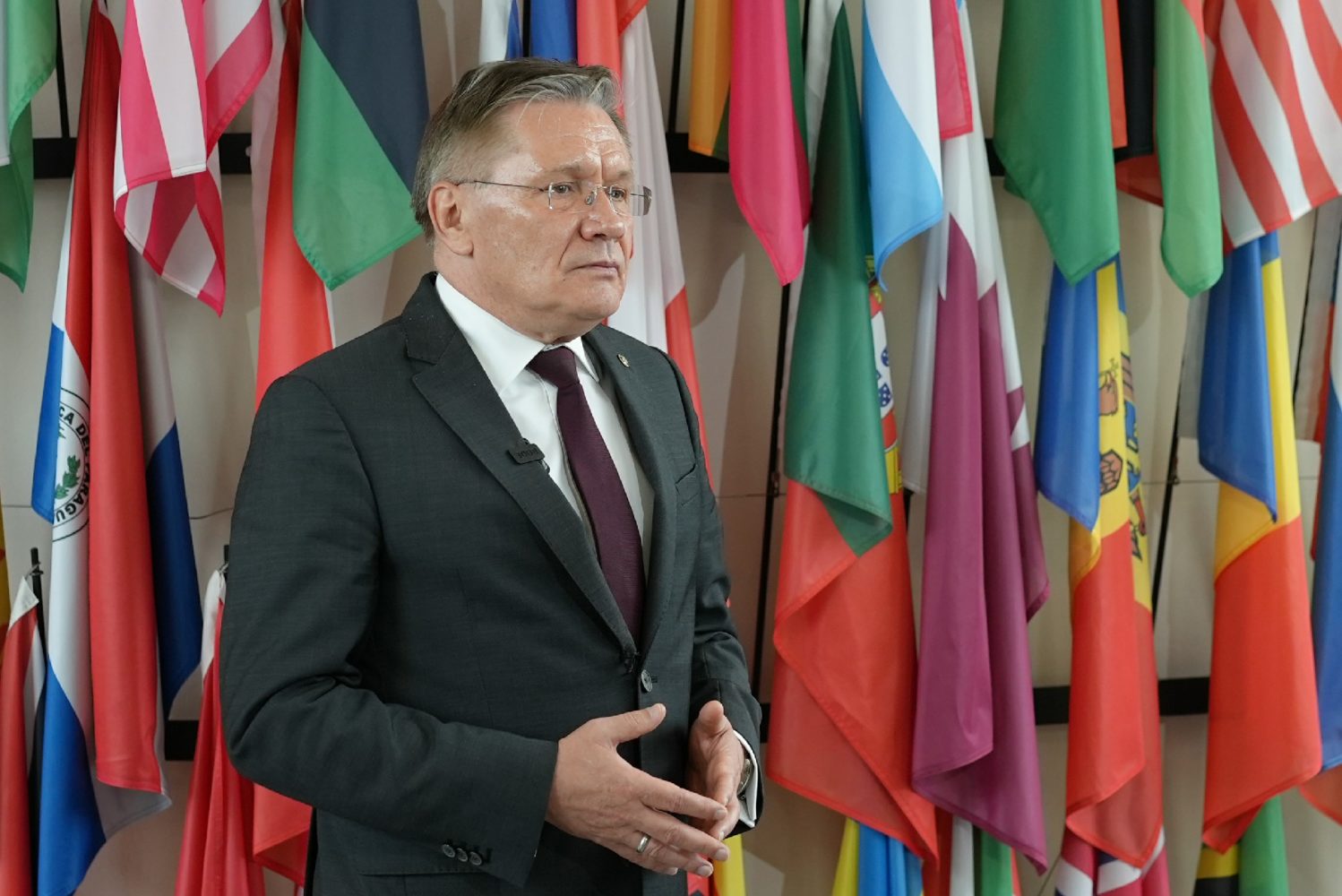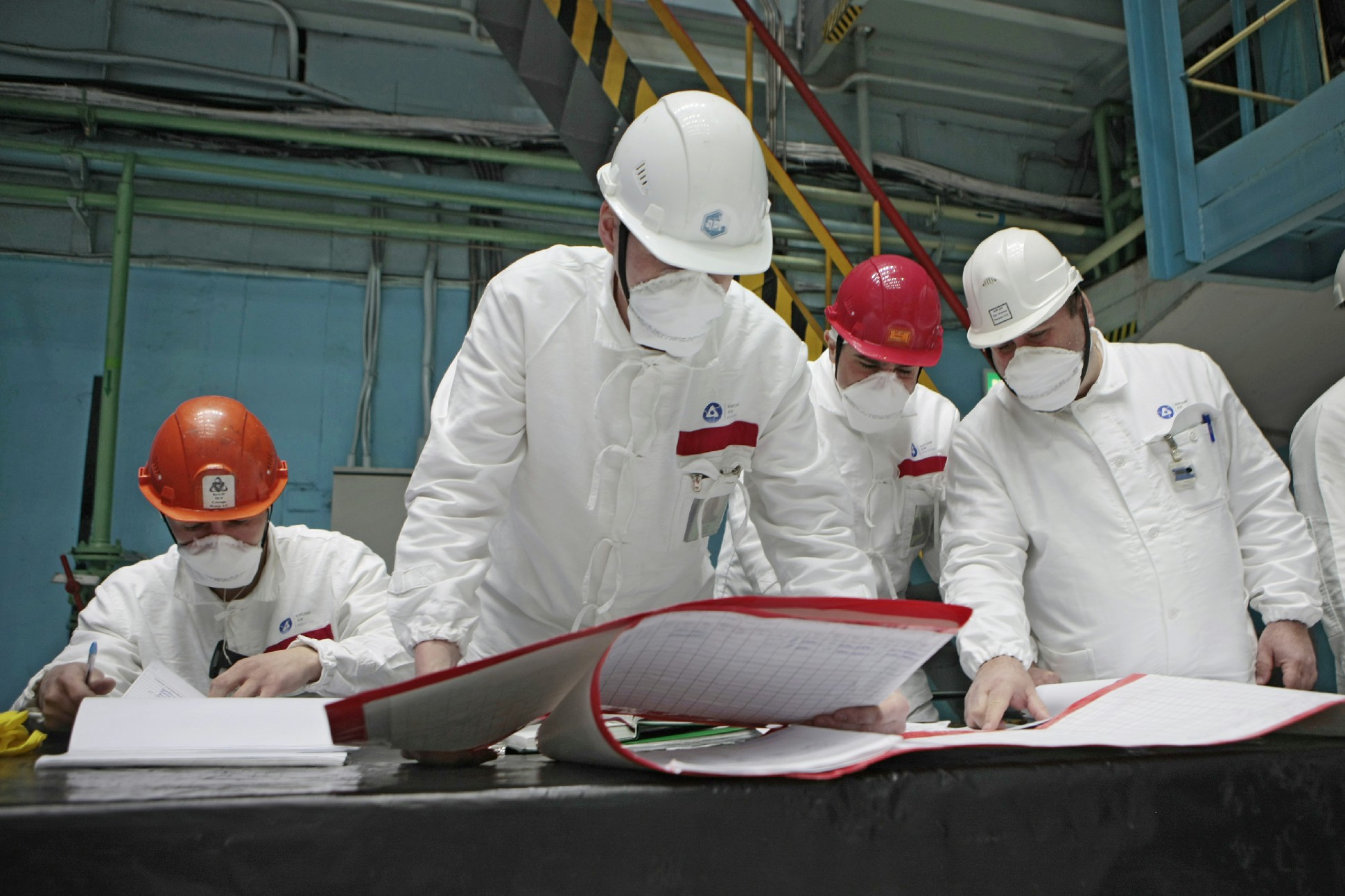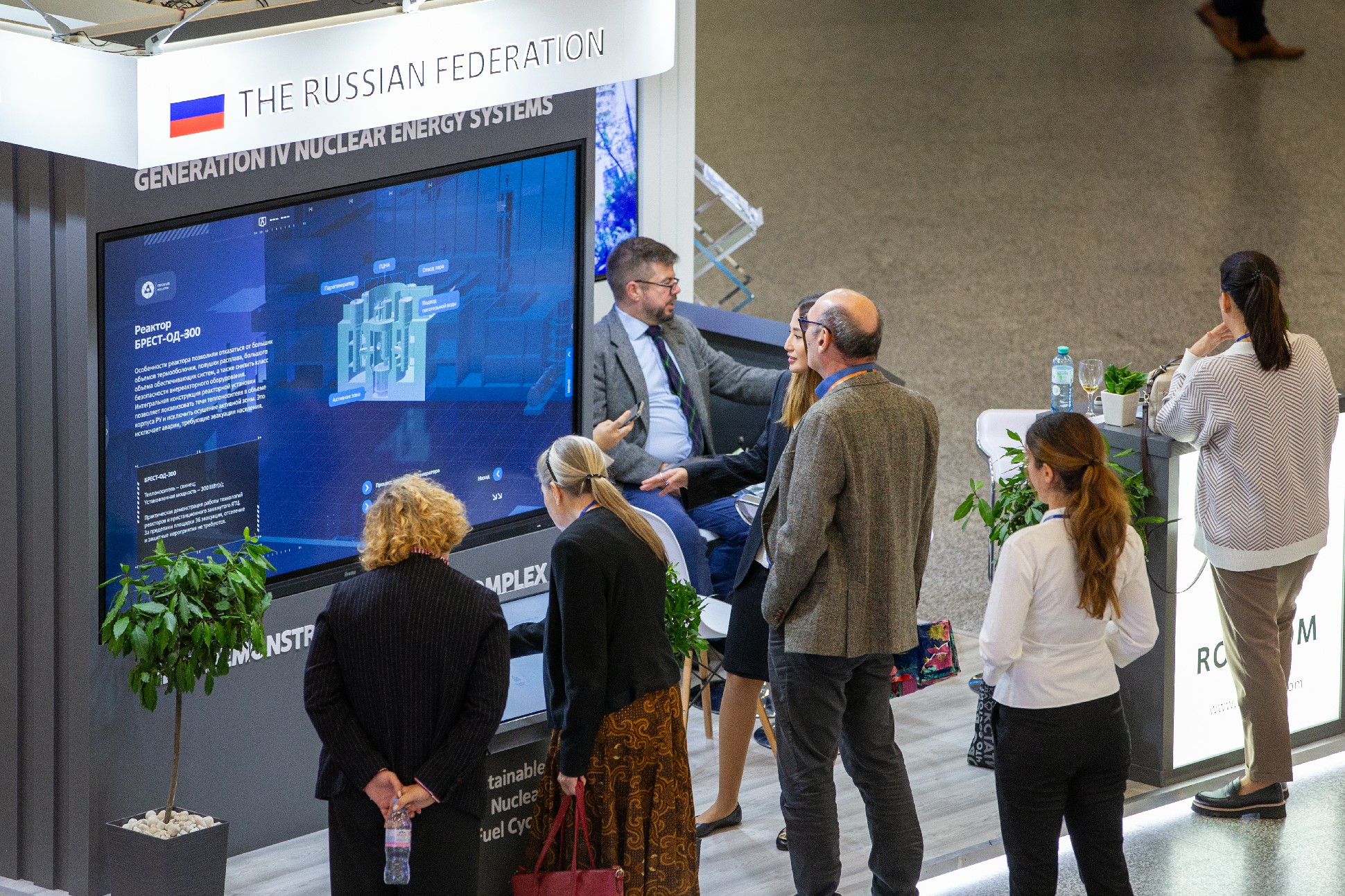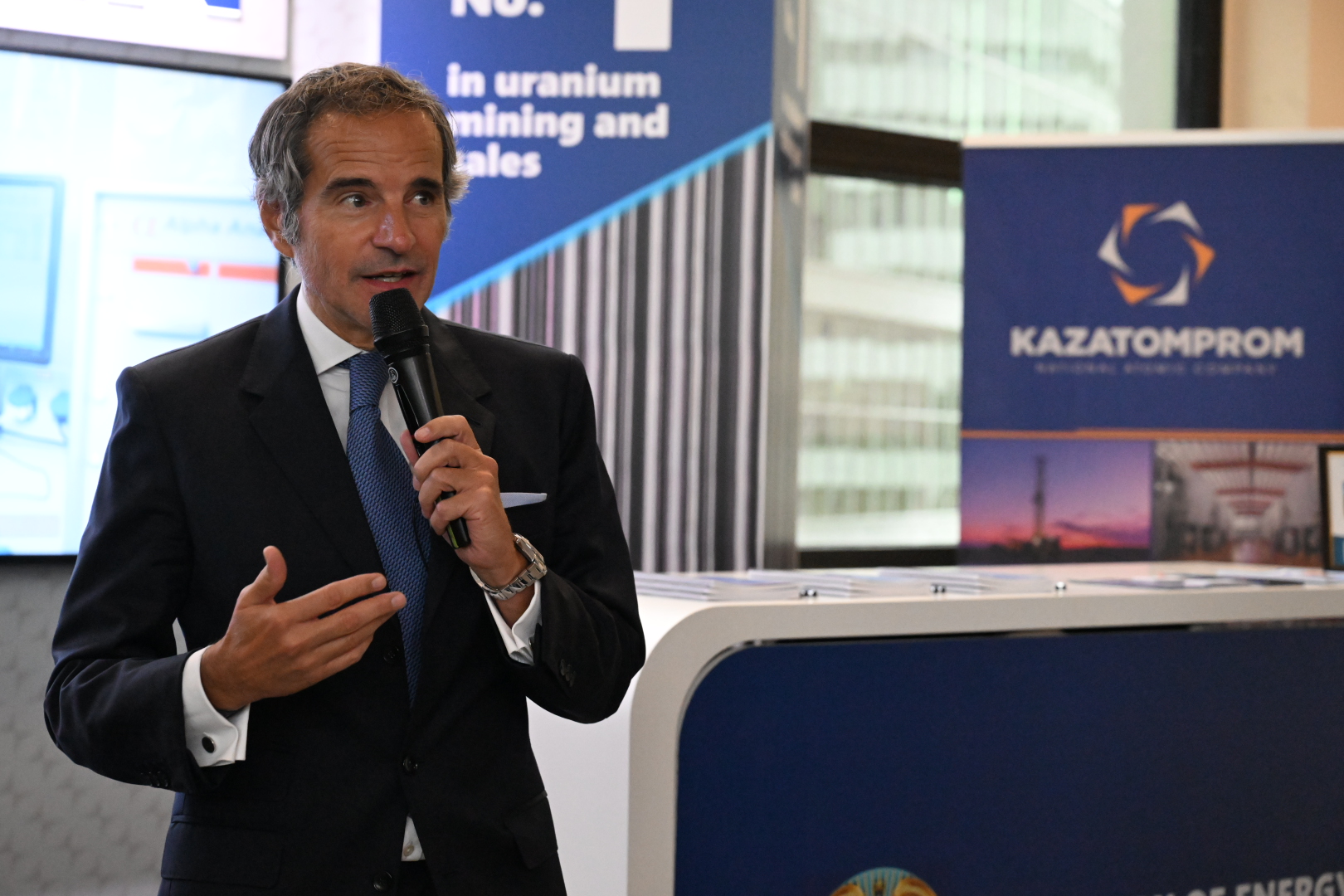
Nuclear Trendsetter
back to contentsRussian nuclear scientists and power engineers are recognized globally as leaders in their field. Working in close contact with its partners, Russian nuclear companies are improving current technologies and enabling technologies of the future. These trends were outlined by Alexey Likhachev, Director General of Rosatom, in his speeches at the IAEA General Conference and the Russian Energy Week.
Past and present
Starting his speech at the IAEA General Conference, which took place in Vienna in mid-September, Alexey Likhachev reminded the audience of how nuclear power was born: “Seventy years ago, the world passed a watershed mark as the first-ever nuclear power plant was put in operation in the Soviet city of Obninsk.” The Soviet Union was also one of the founding fathers of the IAEA, and Russia as its legal successor continues to support the agency’s activities by providing expert knowledge and finance, Alexey Likhachev noted.
For the seven decades that passed, Russia has strengthened and improved its leadership in the field of nuclear energy. Among the 2023 landmarks are the commissioning of the Belarusian NPP, first concrete pouring at El Dabaa Unit 4 in Egypt, nuclear fuel delivery to the Rooppur NPP in Bangladesh, and installation of a research reactor vessel at the Nuclear Research and Technology Center in Bolivia. Rosatom continues building nuclear power plants in Turkey, Hungary and Iran, and provides assistance in the construction of Chinese and Indian nuclear stations.
In Russia, Kursk II Unit 1 is planned to achieve its first criticality by the end of the year. First concrete was poured for the foundation of Unit 3 at Leningrad II. Engineering surveys were completed at Smolensk II, and workers are now proceeding with on-site activities.
Rosatom is also building Europe’s largest radiopharmaceutical factory in Obninsk and working to expand Russia’s nuclear-powered icebreaker fleet as a new icebreaker, Leningrad, has been laid down recently.
“Having established Obninsk Tech, a global center for nuclear education, we have raised the nuclear staff training to a fundamentally new level. Its infrastructure is sufficient to hold up to 10,000 people for a scientific conference, an educational event or a youth gathering,” Alexey Likhachev said.
Key trends
Speaking at the IAEA General Conference, Alexey Likhachev outlined two trends that will define the development of the global nuclear industry in the 21st century and are evolving in Russia.
Closing the nuclear fuel cycle is the most important of them. In Russia, Rosatom is building a Generation IV integrated power production facility as part of its flagship Proryv (Russian for ‘breakthrough’) Project. The facility will comprise a power unit with a 300 MW lead-cooled fast neutron reactor BREST, and on-site modules for the reprocessing of spent fuel and fabrication of fresh fuel. When completed, this will be the first-ever facility operating in a ‘closed’ nuclear fuel cycle. “It is a comprehensive solution that will make it possible to repeatedly use spent nuclear fuel. This approach will eliminate all the issues related to spent fuel management, making nuclear more sustainable and providing an almost limitless source of nuclear fuel,” Alexey Likhachev pointed out.
Not long ago, fuel assemblies containing minor actinides were loaded into BN 800, a fast neutron reactor operating at the Beloyarsk NPP, to burn these most hazardous radionuclides. The project to build an even larger fast neutron reactor, BN 1200, obtained a positive opinion from environmental regulatory bodies.

As noted by the chief of Rosatom, the Russian initiatives to shape a nuclear industry of the future attract increasingly more international interest. Last year, Rosatom and China signed a comprehensive long-term cooperation program for fast neutron reactors and closing the nuclear fuel cycle. In May this year, representatives of India visited the Proryv Project site.
The other trend is small-scale power generation. This is where Rosatom is setting the tone, too. Another four floating nuclear power units are under construction today, and all of them are more powerful than the world’s only floating nuclear power plant, Akademik Lomonosov. The work is underway to build Russia’s first onshore SMR nuclear power plant with RITM 200N reactors.
Alexey Likhachev also mentioned the consistent approach followed by the IAEA with respect to small-scale nuclear generation, including its efforts under the SMR Platform and within the SMR Regulators Forum.
In May, Rosatom and Uzbekistan signed the world’s first export contract for the construction of a nuclear power plant consisting of six small modular reactors. The work is about to begin to set up infrastructure for the yet-to-be-built SMR plant. The Russian nuclear corporation also provides assistance to its Uzbek colleagues in establishing a regulatory framework for the nuclear industry.

Speaking later at the Russian Energy Week (REW) international forum, Azim Akhmedkhadzhaev, Director of Uzbekistan’s Ministry of Energy Agency for Nuclear Energy Development, said that the country had opted for nuclear energy in a strive to provide the growing population and national economy with a reliable and sustainable source of power. He said Tashkent favored small-scale generation for its greater flexibility and lower demand for water, and chose Rosatom because its offer was the best among other vendors’.
Export of technological sovereignty
As a trendsetter for the global nuclear industry, Rosatom readily exports technological sovereignty to other countries. This was mentioned by Russian President Vladimir Putin at the Russian Energy Week. “Russia is ready to help its partners strengthen their technological sovereignty in the energy sector by establishing end-to-end research and supply chains. This is how partnerships are growing to promote peaceful uses of nuclear energy: Rosatom’s building nuclear stations abroad goes hand in hand with the education of local personnel, with the training of engineers, workers and managers for the new facilities. In fact, we do not just build a nuclear plant but, as they say at Rosatom, establish a new sector of energy and economy for our partners,” Vladimir Putin said.
Alexey Likhachev developed this idea in his speech at the REW. First, construction of a nuclear power plant extends far beyond erecting a power generation facility into establishing a new industry in the host country, spanning from staff training, with school students involved, to decommissioning. Such partnerships last for a period of 100 years, he emphasized. Second, the nuclear corporation strives to increase local content in its international projects as much as possible. Local content, i. e. the share of goods and services supplied by local contractors qualified by Rosatom and national regulators, is always higher than that specified in the documents. Third, when the plant is in operation, Rosatom hires local maintenance companies and spare parts suppliers.
“At a certain stage, starting from seven to eight units in operation, it becomes economically feasible for the country to have its local fuel technology. We also benefit from this as we always optimize production costs. Sourcing goods and services locally is the case when duty coincides with intent,” Alexey Likhachev said. He also added that establishing a nuclear industry in another country made the Russian nuclear industry stronger. “The more technological sovereignty you export, the stronger, more sovereign and more independent you become. Exporting our sought-after Generation III solutions, we spend no less effort on showcasing the capabilities of Generation IV technology. This is absolutely a win-win story,” Rosatom chief concluded.
Russia’s New Nuclear and Energy Technologies national project provides for five federal programs to be implemented in the country in 2025–2030 in order to stimulate the development of new generation technologies. These are ‘Seriality of Large and Small Nuclear Power Plants’, ‘New Nuclear Power Engineering’, ‘Experimental Stands for Closing the Nuclear Fuel Cycle’, ‘Thermonuclear Engineering Technologies’, and ‘Special Materials and Technologies for Nuclear Power Engineering’. The goal of these programs is to consolidate Russia’s global leadership in the nuclear field. “Our leadership is global now. This is evident from how much work is done by our leading company, Rosatom,” Vladimir Putin said at the REW.
International cooperation
Russia’s leading role is recognized by the international nuclear community. “As IAEA head Rafael Grossi said, Russia cannot be left out of the development of nuclear energy — it is impossible without Russia,” IAEA Deputy Director General Mikhail Chudakov told the Newsletter. “International cooperation is the most important thing in the nuclear power industry. This can be seen from the IAEA, the World Association of Nuclear Operators, and the Nuclear Harmonization and Standardization Initiative that harmonizes regulatory approaches to accelerate the deployment of small modular reactors. Of course, Russia is present everywhere and hosts colleagues, for example, at the Rosatom Technical Academy. The number of events organized by Rosatom in Russia has not decreased this year. Russia remains an active participant in each of the IAEA events and working groups. Yes, there have been attempts to make Russian speakers at conferences less visible, but we are improving this situation so that it is happening less and less often.”

Rosatom executives had a number of meetings with representatives of other countries at the REW. Alexey Likhachev met with Nyan Tun, Union Minister of Electric Power of Myanmar, to discuss the progress of the project to build an SMR plant in the country and cooperation in the field of wind power generation. It should be recalled that Rosatom Renewable Energy (then Novawind), the Ministry of Electric Power of Myanmar and Myanmar-based company Zeya & Associates signed a memorandum of understanding for the construction of a 200 MW wind farm in the country. The signing took place at the St. Petersburg International Economic Forum in June last year.
Alexey Likhachev and Belarusian Minister of Energy Alexey Kushnarenko discussed the maintenance of the Belarusian NPP, nuclear fuel supplies and joint projects in the nuclear fuel cycle, as well as new non-nuclear initiatives aimed at ensuring the technological sovereignty of the Union State of Russia and Belarus.
Nenad Popović, Serbian minister in charge of international cooperation, and Alexey Likhachev discussed non-energy applications of nuclear technology and training of nuclear and related personnel at Russian universities. The parties intend to join forces in delivering nuclear energy projects if Serbia lifts the legislative ban on officials to discuss the construction of nuclear generation and nuclear fuel facilities in the country. The possibility of lifting these restrictions is being considered.
In addition, Rosatom’s Deputy Director General for International Relations Nikolai Spassky met with a Malian delegation headed by Minister of Economy and Finance Alousséni Sanou. Present at the meeting were Minister of Energy and Water Bintou Camara, Minister of Transport and Infrastructure Madina Sissoko Dembélé, and Minister of Mines Amadou Keita. The parties discussed the construction of solar farms in the country, geological exploration and expansion of cooperation, and agreed to continue close contacts. The Malian party accepted Nikolai Spassky’s invitation to visit a Russian nuclear power plant by the end of the year.




